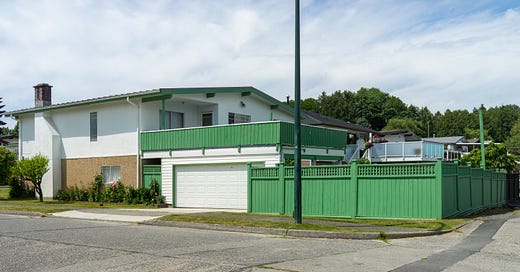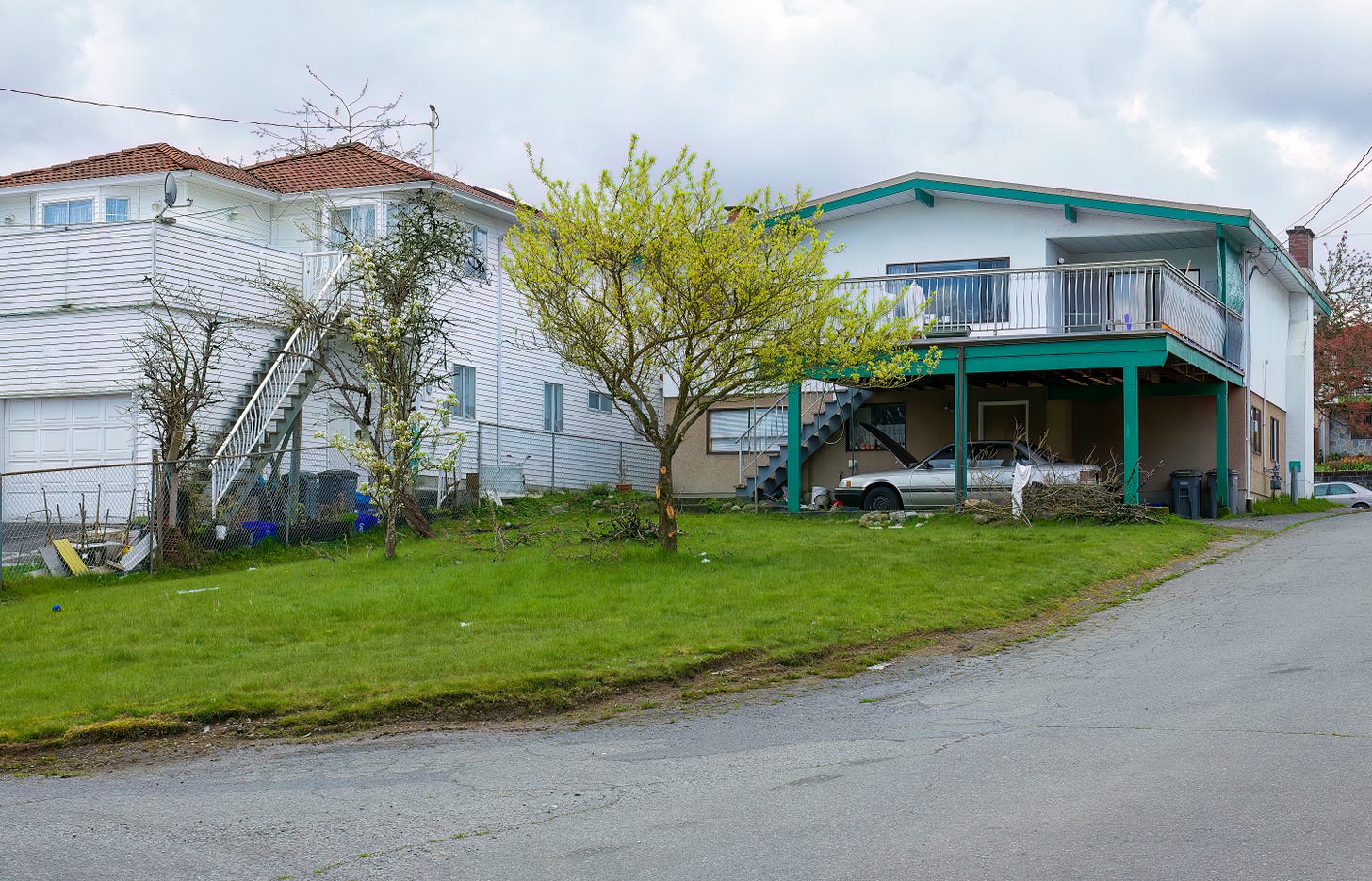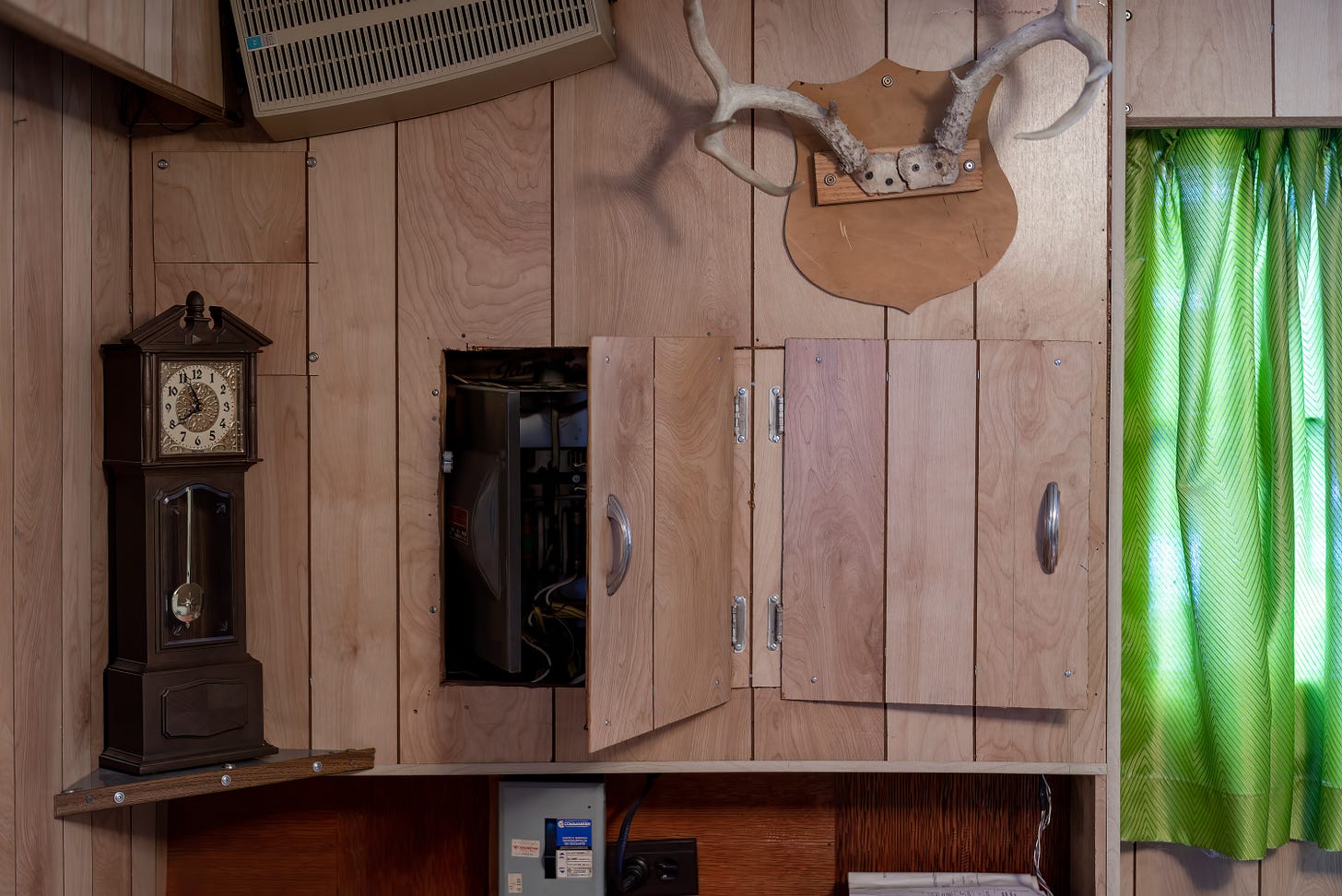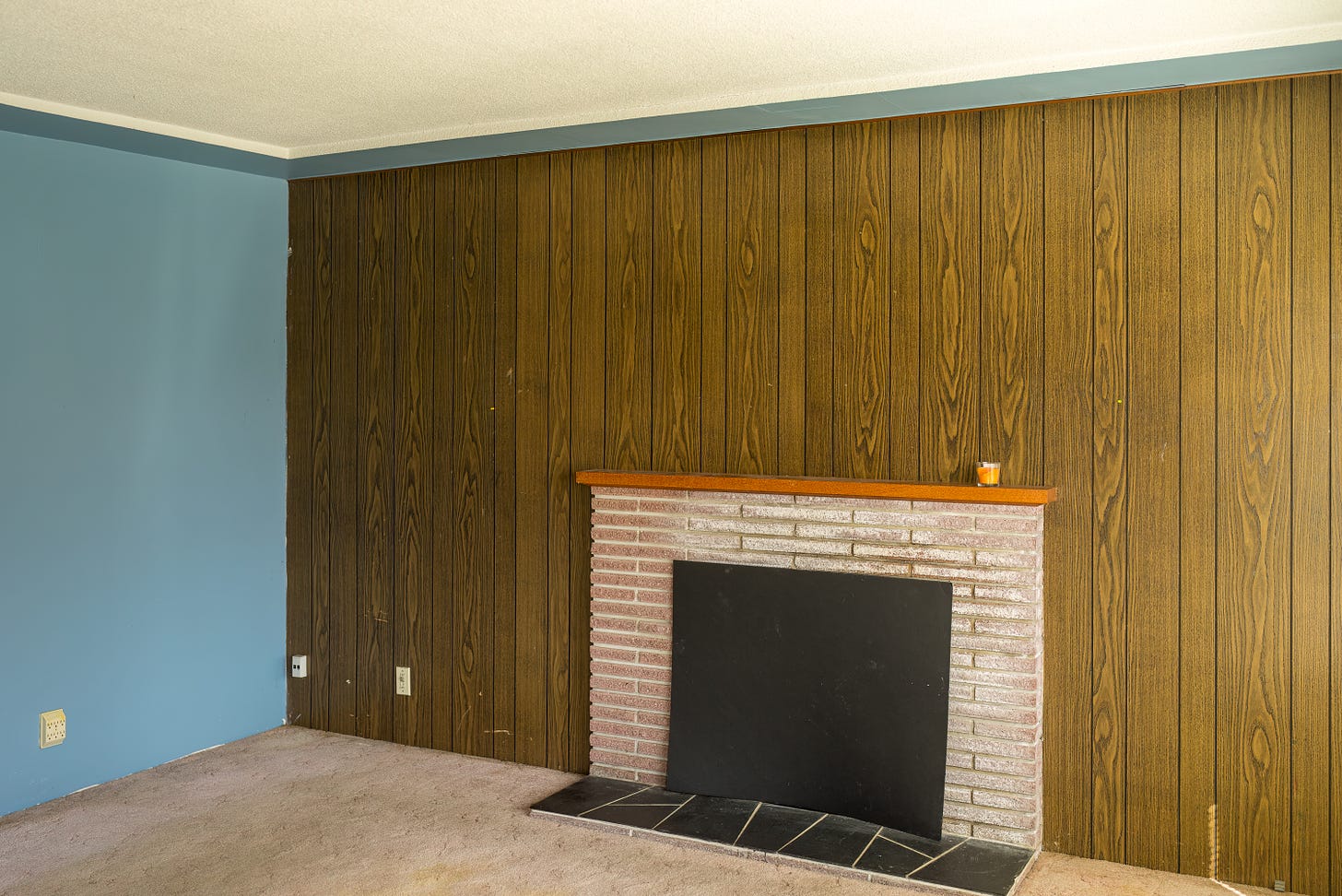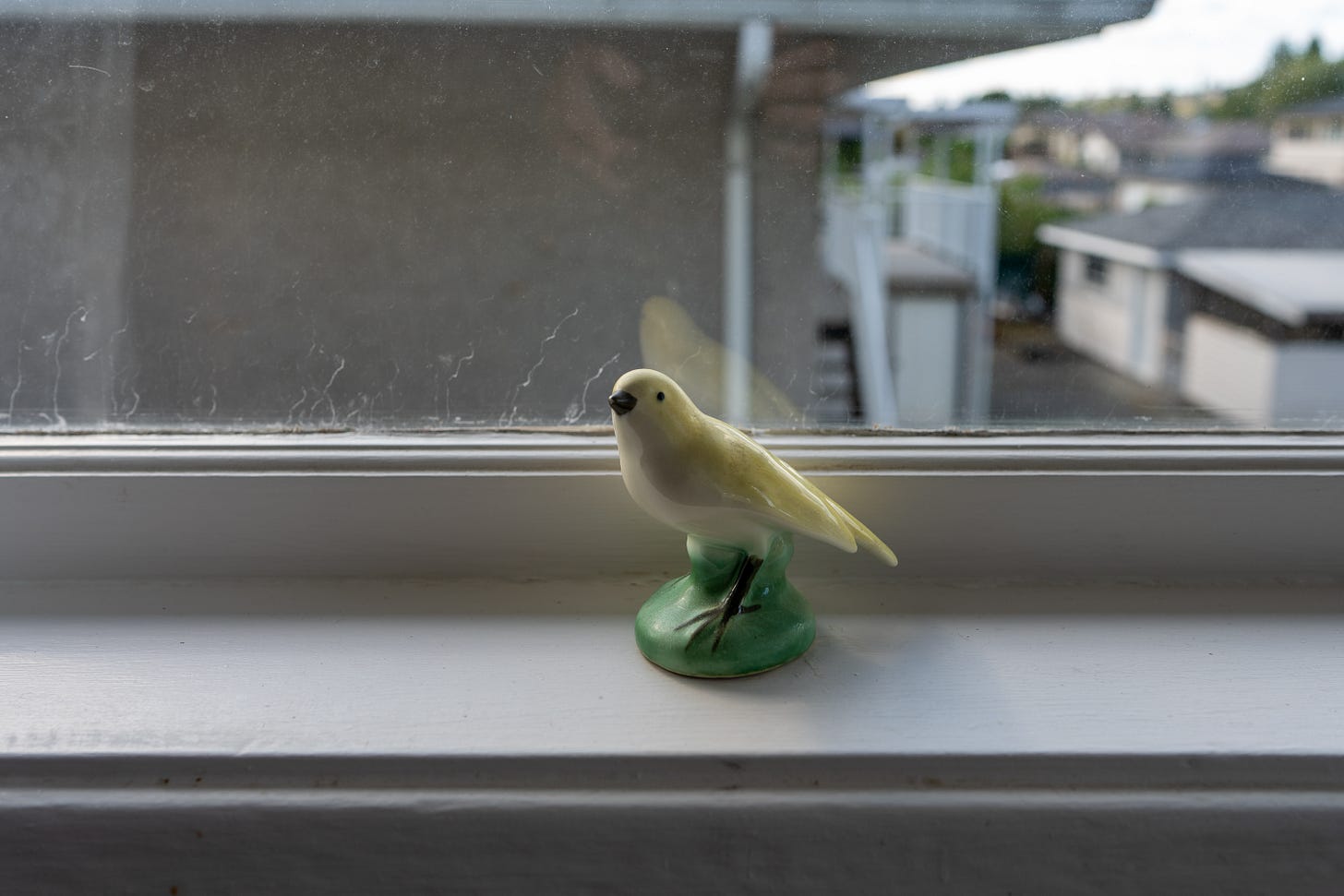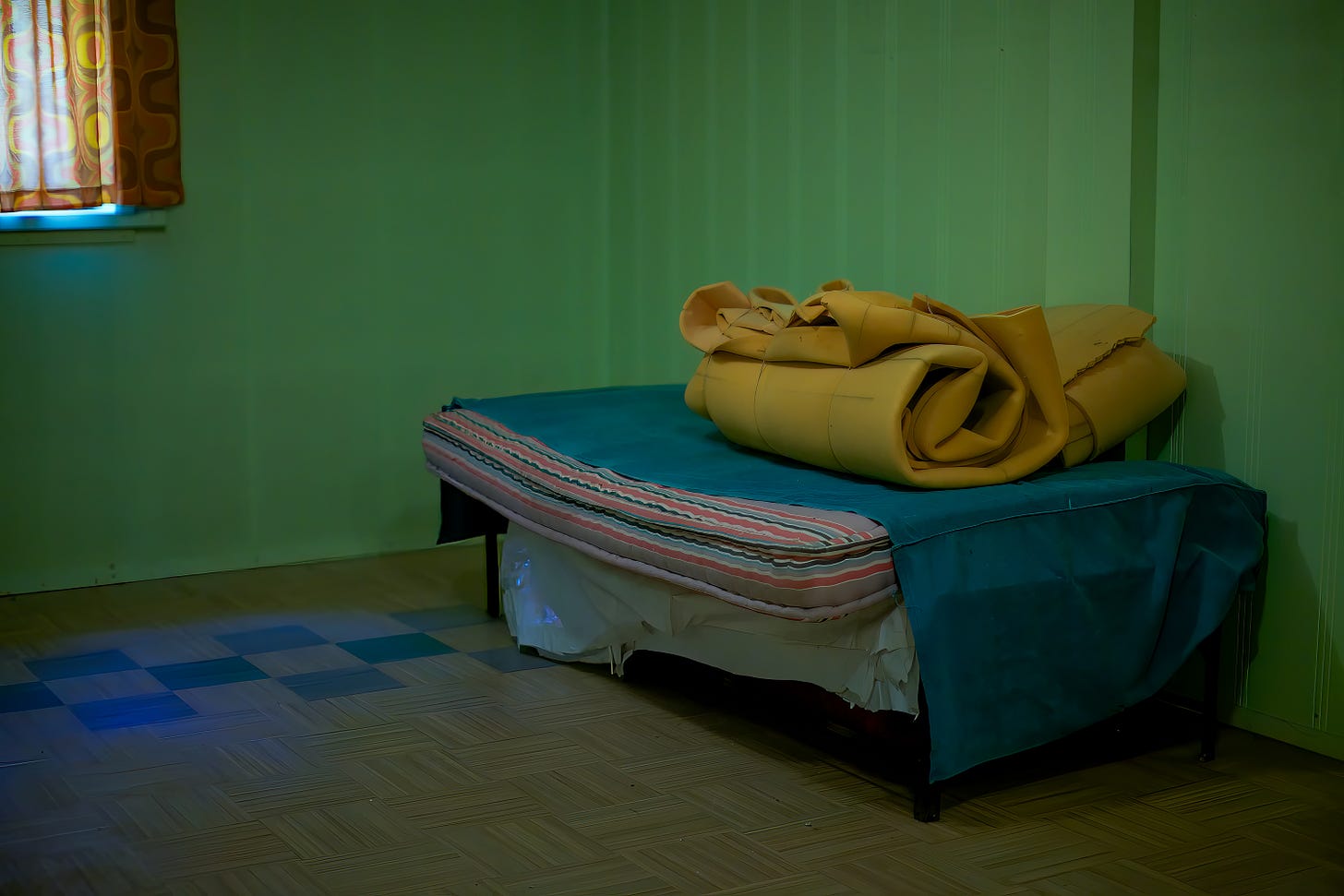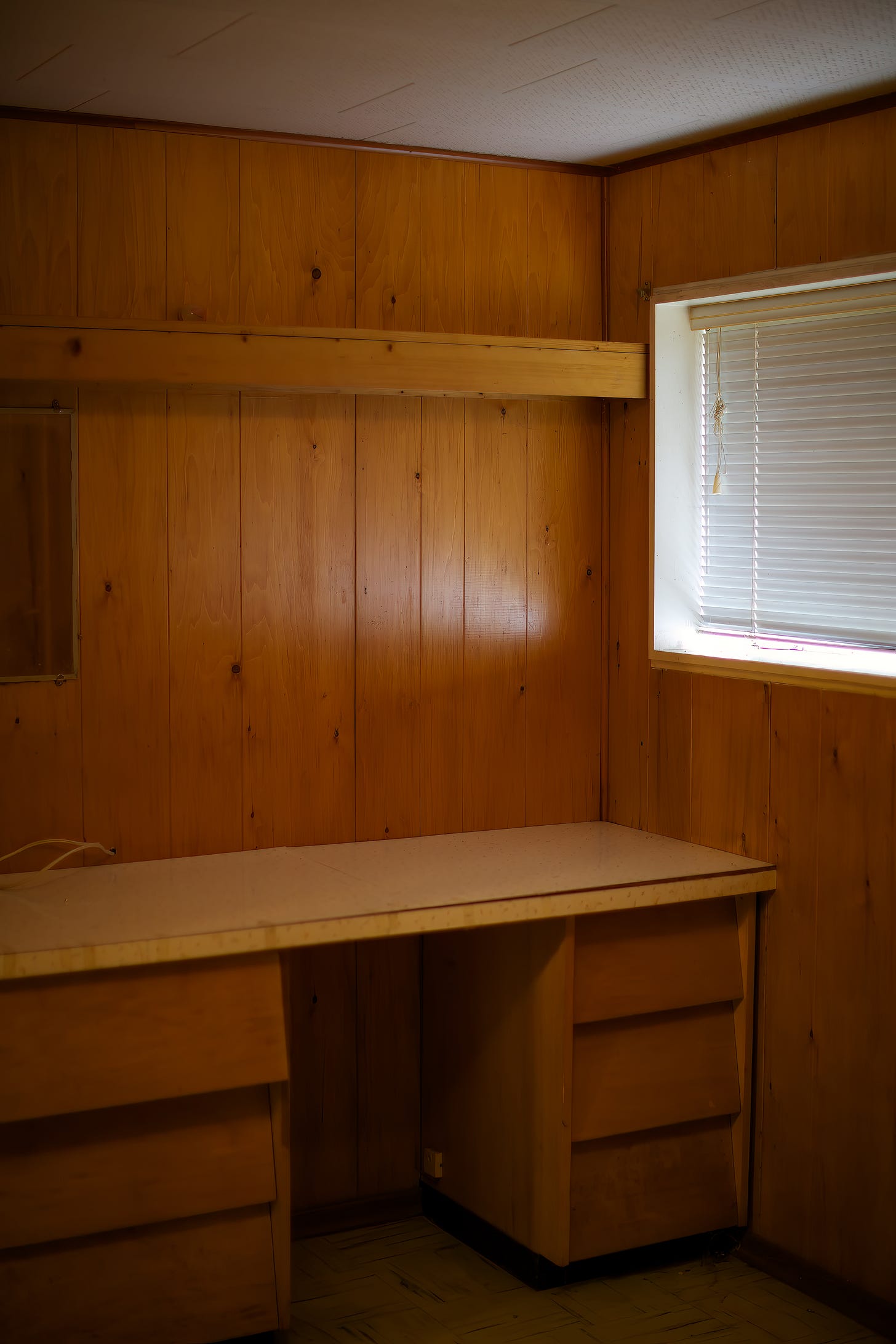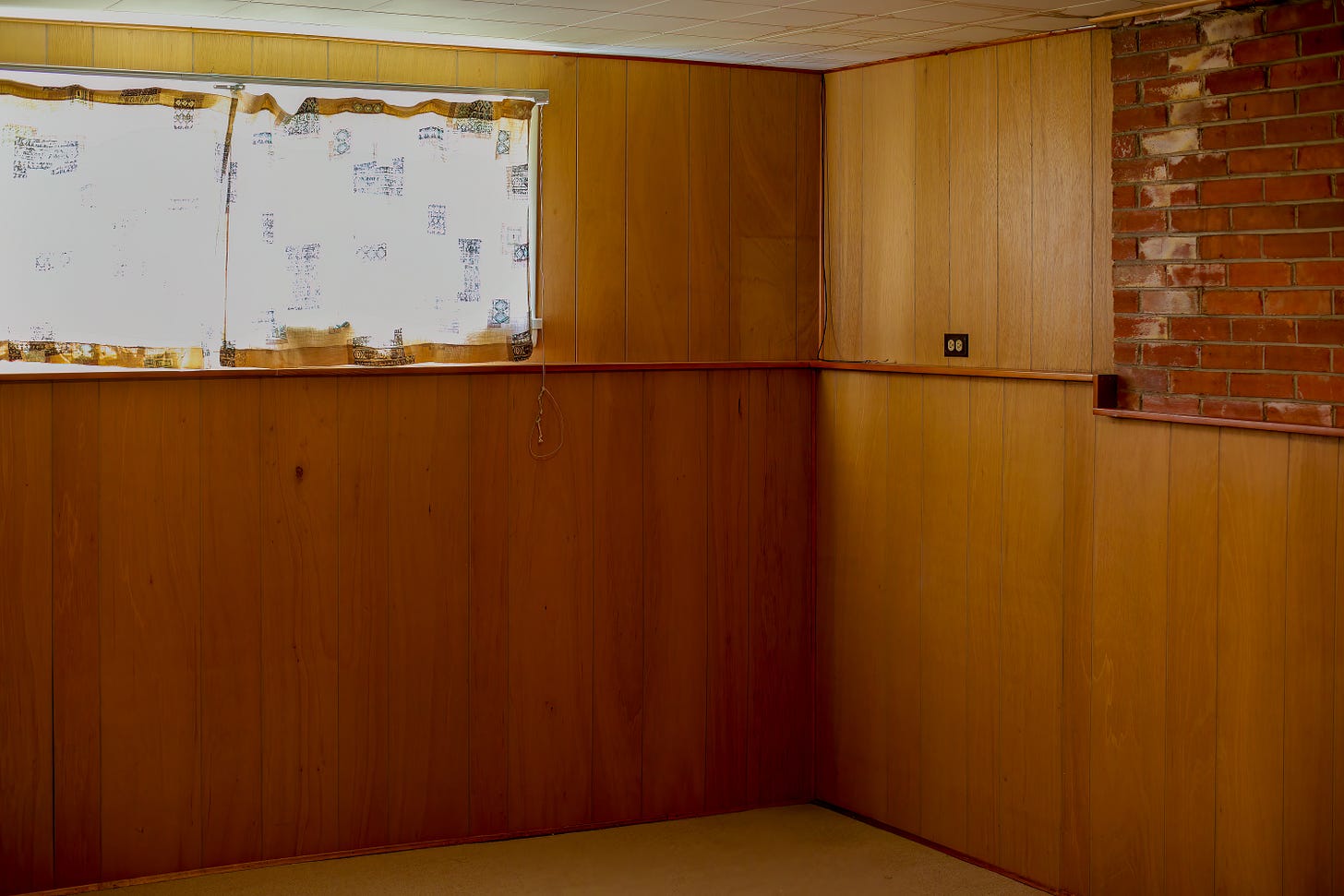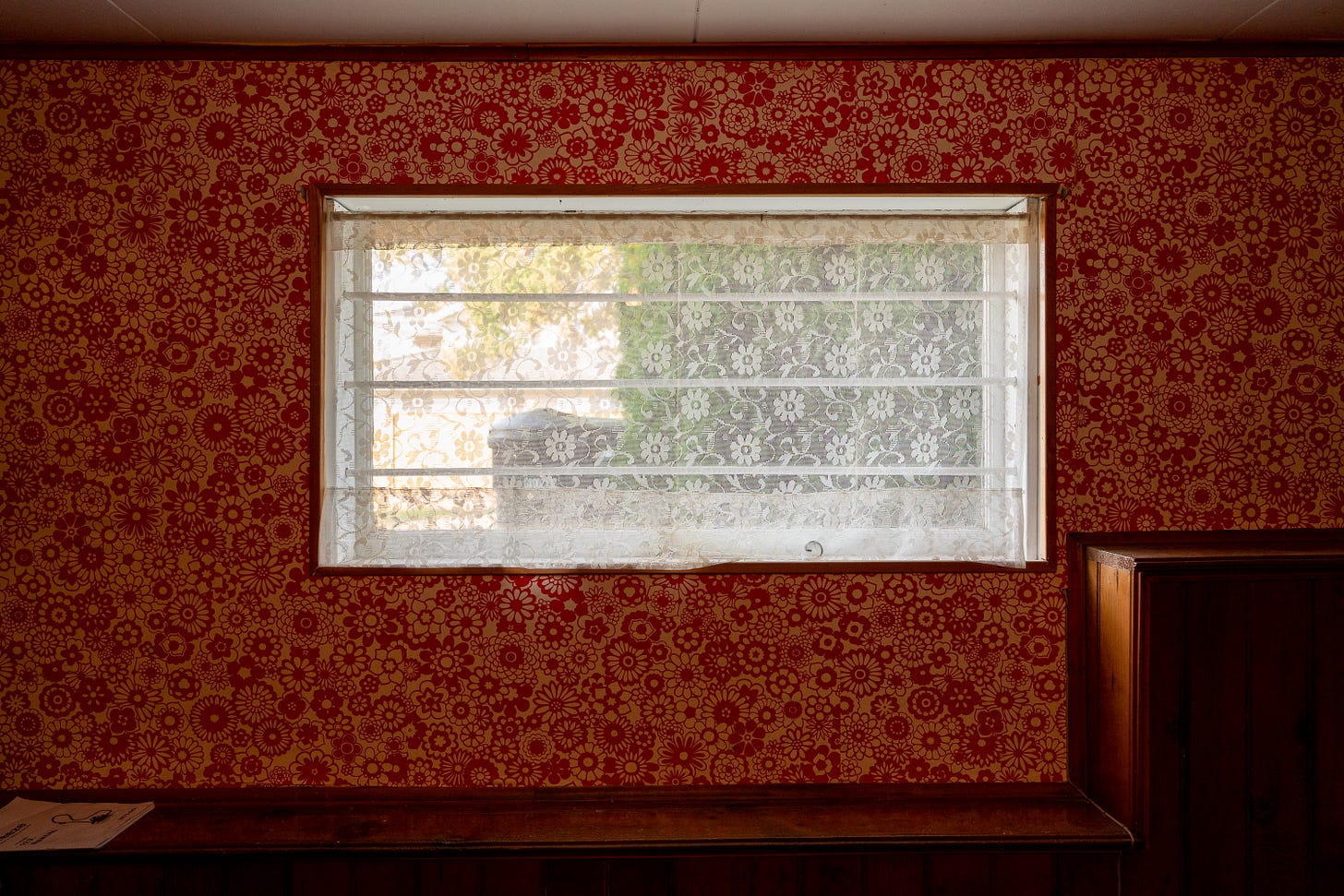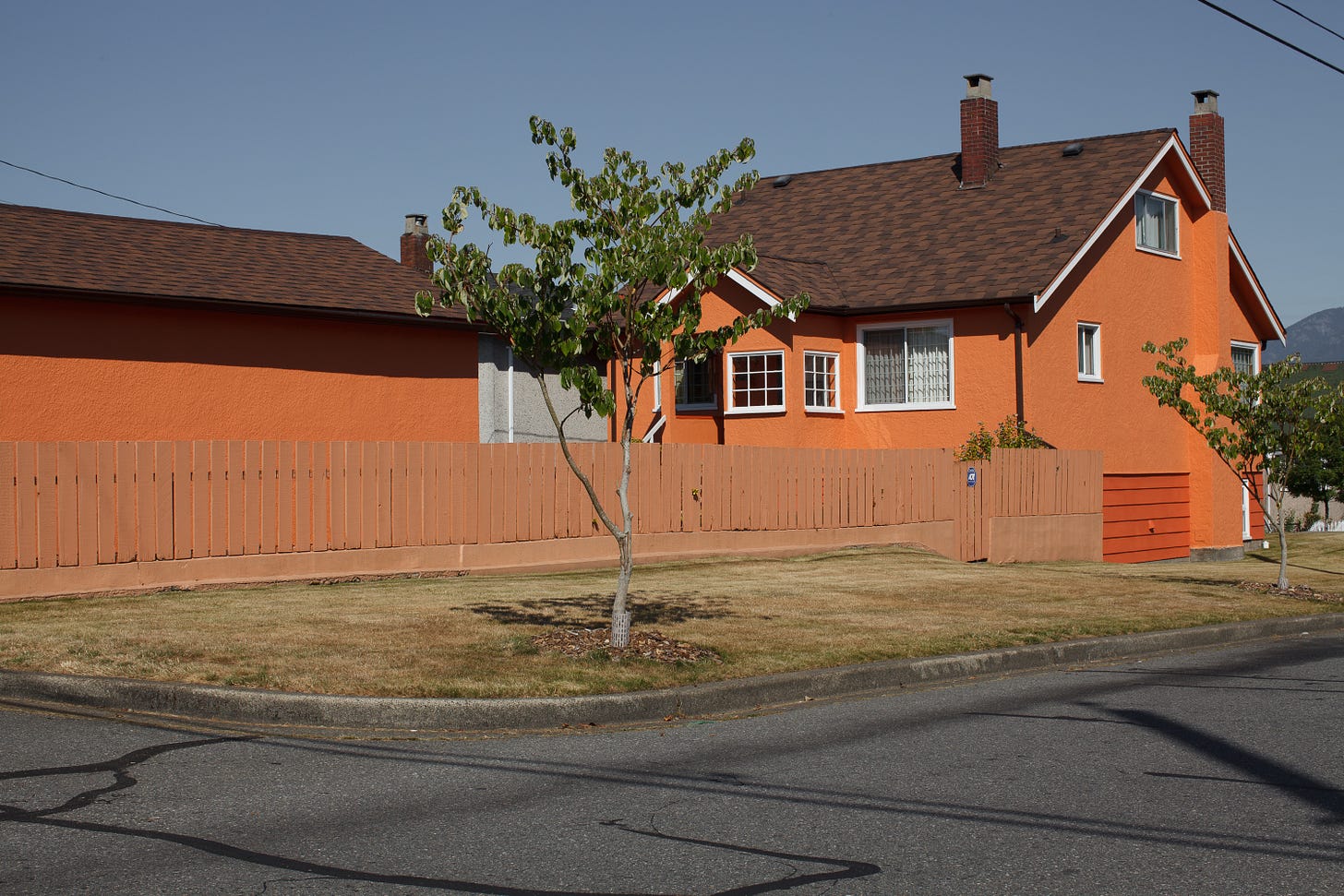Bachelard and Poetic Space
This past week I found myself focused on editing photos and reading Gaston Bachelard’s book, The Poetics of Space. Editing photos because I have fallen seriously behind, and The Poetics of Space because in the past few weeks, I’ve read or heard it mentioned several times and it has been sitting in my bookcase since it was assigned reading in my first year of college in 1972.
Scanning through images I started looking at a large project I hadn’t really organised. The project is focused on domestic spaces: basements, bedrooms, garages and yards. I had noticed that no one seemed to be documenting the nature of our relationship with our homes, the only houses I saw when looking through photos were old wooden buildings captured in a photo for their nostalgic or historic quality. Here in Vancouver, I was watching as many of these homes were sold and then immediately torn down and replaced by newer homes that seemed to fill the entire footprint of the property plate. The nature of entire neighbourhoods was changing, spurred on by a dramatic increase in land values.
Over the years these older houses I was interested in were customized by their owners, with areas carved out for extra storage, workshops, playrooms and basement entertainment spaces. Yards served as extensions of the living space and as large gardens with homemade tool sheds and plastic-covered greenhouses. These owner-built details reminded me of my own home on the east coast. They sparked strong memories, some good, and some not-so-good. Little details would bring up thoughts and emotions that were long forgotten.
I tried classifying these thoughts and emotions: Class, race, ethnicity, identity, family and parent-child relations, successes and failures, all of these things are there when we find ourselves experiencing these kinds of spaces in a good photo. Recently I posted several of my house photos online and made a short comment about how the uber-well-kept houses and yards seemed oppressive to me. I was a gay kid growing up in a town called Indian Orchard, where streets divided ethnic groups and the people from Quebec went to the brick-and-stone French church, the Polish went to the Yellow wooden Polish church, the Armenians to an odd modern church that looked more like a spaceship, and each group went to their own cub scouts and didn’t really mix until later in Boy Scouts.
Yes, I found some of the images of houses oppressive, the mowed lawn, like the buzz cut on a 50’s teen, and the precisely trimmed hedges. All very controlled. Little open variation, and variation was kept private, almost secret. My thoughts received back a very nasty comment that I should mind my own business, and let people alone. As if I had visited these people and verbally assaulted them. “Their yards were perfect,” someone wrote. Reading that comment I was reminded of a video about New Topographics photos by Cathrine Opie, who has done several large landscape and architectural projects including a series about the neighbourhood she lived in as a teen, and how it was a planned neighbourhood. Row upon row of similar houses and yards. When she showed this project at school her instructors questioned her: what did it have to do with queerness? Queerness and identity were her focus, after all. She answered that her project was, but it’s nature, domestic, and therefore a political piece. And I think she was right, any image of domesticity is, by its nature, political and steeped in issues of identity.
The Poetics of Space addresses these issues of wealth, class, identity, and oppression. It discusses the importance of memory and imagination, and how together they create meaning. In its structure, the book is divided into several sections, each of which explores a different aspect of how we experience and understand the spaces we occupy. Like Yi-Fu Tuan (Topophilia: A Study of Environmental Perceptions, Attitudes, and Values) who I’ve written about elsewhere, Bachelard uses the term “topophilia,” or “love of place.” I always saw the term a bit differently, as the sense of place. Section after section of this book looks at particular and specific experiences we have with space, and how memory and experience change this space into what Tuan would call place. I often refer to this process as “how space becomes place.”
Bachelard argues that we have a deep emotional attachment to the spaces we inhabit and that this attachment drives us forward (from the past to the present, and then the future), it is a fundamental aspect of our human experience. The sections of his book look at different types of spaces, including nests, shells, corners, cupboards, and so on. He describes how spaces, even small spaces, can seem vast and expansive to us, especially as they become filled with personal memories and experiences. He refers to this as “infinite immensity.” He writes at length about this psychological experience and how it has a profound impact on our relationship to and understanding of the world. He says the process of understanding this is phenomenological, akin to psychoanalysis. It leads to deep and sometimes surprising emotions.
One critical aspect of this process is the relationship between space and imagination. I see this in the works of photographers like Todd Hido, Gregory Crewdson, Cathrine Opie, Sally Mann and Alec Soth, among others.
When people talk about Crewdson’s work they seem to focus almost entirely on the technical aspects of his “production process,” but the work actually develops from a deep experience of personal memory and reliving of his own experiences of place. For instance, in one photo he has a young boy looking through holes in the floor in a dark room, bright light is shining through the holes, which, while it adds an element of danger to the mood, actually comes from his own experience of listening through the floor of his house to his father who had an office in the basement where he saw clients. Crewdson would listen to them talking. I can imagine what he heard. The work springs from this deep memory, which while seemingly small fills the image with emotion. What’s that saying? The truth is in the details.
I also know his work has a strong impact on me because I grew up in the same area of Western Massachusetts where most of his work is done, and know the streets, houses, stores and terrain that he focuses his works on. While there are many aspects of his work I don’t really appreciate, I find it difficult to turn my eye away because of the memories evoked. And I find myself always looking for similar topographies.
Bachelard and Tuan write about similar memories of past experiences in particular spaces, and how these memories affect our current responses to new spaces. This is far more than nostalgia, it happens because of the details and depth of the memories. Both write extensively about sensory elements, the role of touch, smell and other senses in creating a sense of intimacy and familiarity with the spaces we inhabit or view in photographs. (Look up the titles of Bachelar’s other writings….you’ll see). All of this reminds me of my own images where I often focus on textures, the look and feel of carpets, the damp smell of basements, the transparency of windows and the woven patterns on curtains.
Many photos I see these days, especially of houses, are often done with too much focus on nostalga , involving little more than an isolated pun, a singular clever juxtaposition, and seldom are they read from a deeper level that is more phenomenological, as Bachelard would say, more “psychoanalytic,” more about the depth of singular experiences and emotions for which we might have few words, but our memories are profoundly called to. Hence the value of the camera and the printed image.
Today I was listening to a video with Alec Soth discussing his photos of men who lived away from society. You know, the guy who lives in a cave, another who lives in a tiny house and flies model airplanes. He stands, in one image, next to a cloth line of his freshly washed items. Very particular and singular things. If you grew up without a clothes dryer and knew the smell of the clothes after they hang in the sunlight…it would soak a memory. These are people who have moved to the edge of society, if not beyond the edge. Soth spoke about his interest in men who stepped away from society, live on their own and longed for isolation. He talks about how this relates to feelings he too has, and his struggles with interacting with people, as well as his own depression. Like most artists, painters, novelists, and poets, Soth, through his photos presents hints and dabs of memories of specific places and puts a premium on the importance of embodied experience and personal memory in shaping our understanding and relationship with the world around us. It’s not just about the guy living in a cave.
I write these essays to say something about my process, which involves not just walking around with a camera, but taking images with intent. I find that in the writing of others, often in music, looking at photo books, and talking with other photographers. If you have time, take an opportunity to share what experiences and supports help you focus your work. Yes, make a comment!
All Images © 2023 Jim Roche
All Rights Reserved
A nice article about Cathrine Opie. Click Here

